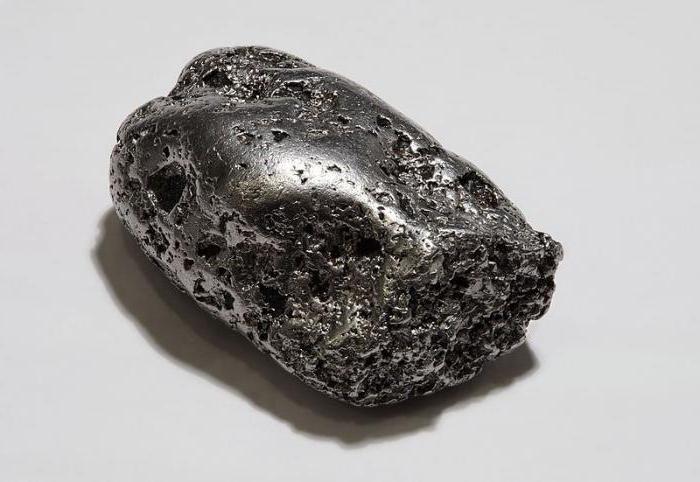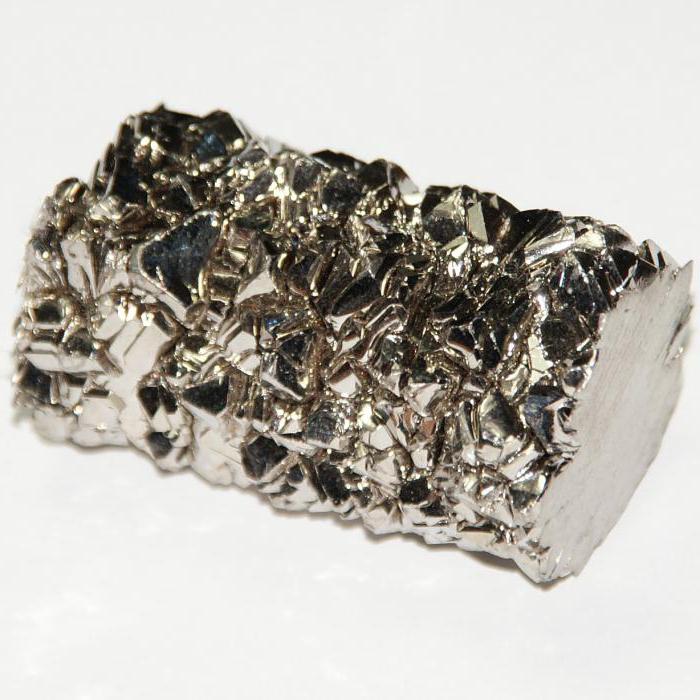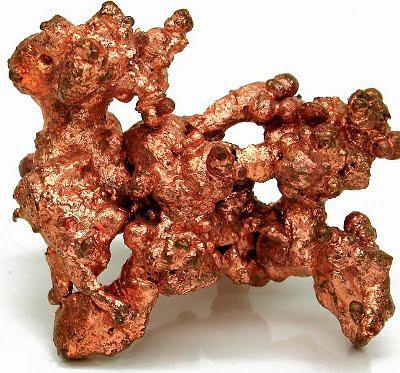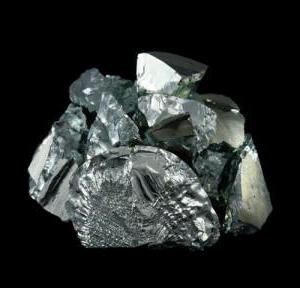The leading industry in the economy of our country is metallurgy. For its successful development, a lot of metal is needed. This article will focus on non-ferrous heavy and light metals and their use.
Non-ferrous metals classification
Depending on the physical properties and purpose, they are divided into the following groups:
- Light non-ferrous metals. The list of this group is long: it includes calcium, strontium, cesium, potassium, as well as lithium. But in the metallurgical industry, aluminum, titanium and magnesium are most often used.
- Heavy metals are very popular. These are well-known zinc and tin, copper and lead, as well as nickel.

- Noble metals such as platinum, ruthenium, palladium, osmium, rhodium. Gold and silver are widely used for jewelry.
- Rare-earth metals - selenium and zirconium, germanium and lanthanum, neodymium, terbium, samarium and others.
- Refractory metals - vanadium and tungsten, tantalum and molybdenum, chromium and manganese.
- Small metals, such as bismuth, cobalt, arsenic, cadmium, mercury.
- Alloys - brass and bronze.
Light metals
They are widespread in nature. These metals have a low density. They have high chemical activity. They are durable compounds. The metallurgy of these metals began to develop in the nineteenth century. They are obtained by electrolysis of salts in molten form, electrothermal and metallothermy. Light non-ferrous metals list which has many items, are used for the production of alloys.
Aluminum
Refers to light metals. It has a silver color and a melting point of about seven hundred degrees. In industrial conditions it is used in alloys. It is used wherever metal is needed. Aluminum has a low density and high strength. This metal is easily cut, sawn, welded, drilled, soldered and bent.

It forms alloys with metals of various properties, such as copper, nickel, magnesium, silicon. They have great strength, do not rust under adverse weather conditions. Aluminum has high electrical and thermal conductivity.
Magnesium
It belongs to the group of light non-ferrous metals. It has a silver-white color and a film oxide coating. It has a low density, is well processed. The metal is resistant to combustible substances: gasoline, kerosene, mineral oils, but is subject to dissolution in acids. Magnesium is not magnetic. It has low elastic and casting properties, is subject to corrosion.
Titanium
It is a light metal. It is not magnetic. It has a silver color with a bluish tint. It has high strength and corrosion resistance. But titanium has little electrical conductivity and thermal conductivity. Loses mechanical properties at a temperature of 400 degrees, becomes brittle at 540 degrees.

The mechanical properties of titanium increase in alloys with molybdenum, manganese, aluminum, chromium and others. Depending on the alloying metal, the alloys have different strengths, among them there are high strength ones. Such alloys are used in aircraft construction, engineering, shipbuilding. From them produce rocketry, household appliances and much more.
Heavy metals
Heavy non-ferrous metals, the list of which is very wide, are obtained from sulfide and oxidized polymetallic ores. Depending on their types, the methods for producing metals differ in the method and complexity of production, during which the valuable components of the raw material must be completely extracted.
Metals of this group are hydrometallurgical and pyrometallurgical. Metals obtained by any method are called rough. They undergo a refining procedure. Only then can they be used for industrial purposes.
Copper
Non-ferrous metals, the list of which is presented above, not all are used in industry. In this case, we are talking about a common heavy metal - copper. It has high thermal conductivity, electrical conductivity and ductility.

Copper alloys are widely used in industries such as engineering, and all due to the fact that this heavy metal is well alloyed with others.
Zinc
He also represents non-ferrous metals. The list of names is long. However, not all heavy non-ferrous metals, which include zinc, are used in industry. This metal is fragile. But if you heat it to one hundred and fifty degrees, it will be forged without problems and rolled easily. Zinc has high anticorrosion properties, but it can be destroyed by exposure to alkali and acid.
Lead
The list of non-ferrous metals will be incomplete without lead. It is gray with a glimpse of a blue hue. The melting point is three hundred twenty-seven degrees. It is heavy and soft. Well forged with a hammer, while not hardening. Various forms are poured from it. Resistant to acids: hydrochloric, sulfuric, acetic, nitric.
Brass
These are alloys from copper and zinc with the addition of manganese, lead, aluminum and other metals. The cost of brass is less than copper, and the strength, toughness and corrosion resistance are higher. Brass has good casting properties. Parts are produced from it by stamping, rolling, drawing, rolling. Of this metal make shells for shells and much more.
The use of non-ferrous metals
Non-ferrous metals are called non-ferrous, but also their alloys. The exception is the so-called "chermet": iron and, accordingly, its alloys. In Europe, non-ferrous metals are called non-ferrous. Non-ferrous metals, the list of which is rather big, are widely used in various industries around the world, including in Russia, where they are the main specialization. Produced and mined in the territories of all regions of the country. Light and heavy non-ferrous metals, the list of which is represented by a wide variety of items, make up an industry called “Metallurgy”. This concept includes mining, ore beneficiation, and smelting of both metals and their alloys.

Currently, the non-ferrous metallurgy industry has become widespread. The quality of non-ferrous metals is very high, they are durable and practical, they are used in the construction industry: they finish buildings and structures. Profile metal, wire, tapes, strips, foil, sheets, rods of various shapes are produced from them.